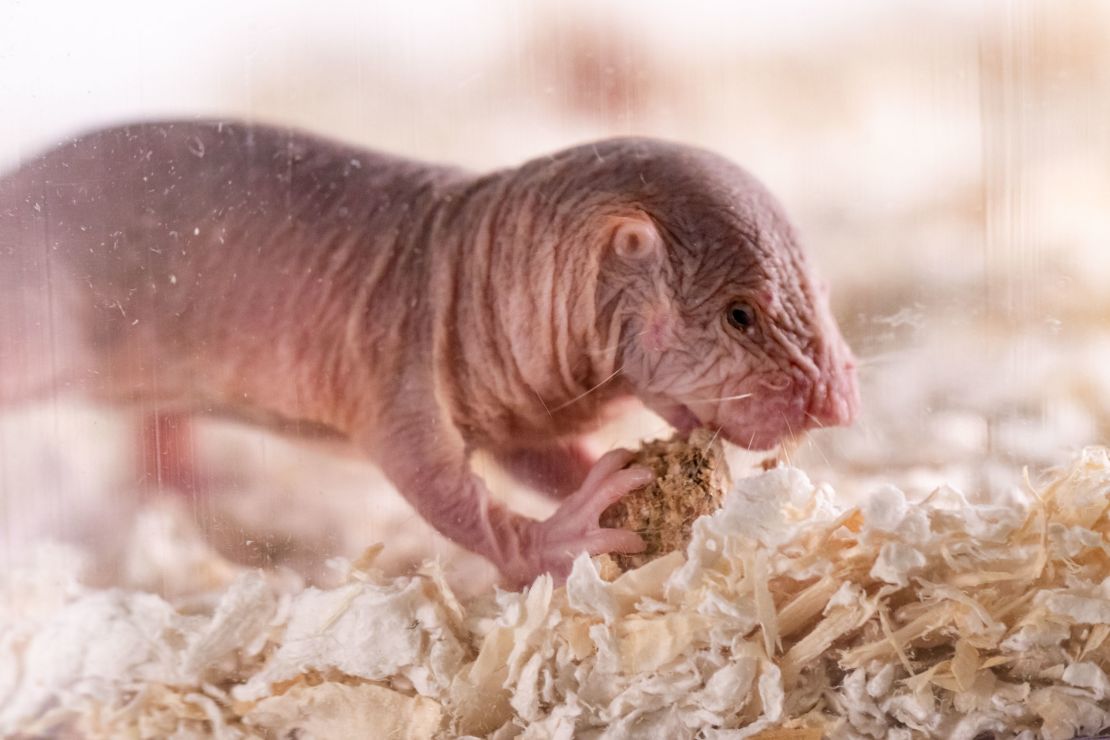Strangers are just friends you haven’t met – unless you’re a naked mole rat.
Arguably nature’s least beautiful animals, naked mole rats speak in dialects local to their own colonies and are hostile to outsiders, according to a study published Friday.
Naked mole rats are “really highly unusual in that they’re the most social rodent that we know of,” Gary Lewin, senior author and professor in neurobiology at Germany’s Max Delbrück Center for Molecular Medicine in the Helmholtz Association (MDC), told CNN.
The furless rodents can live in colonies of up to 300 members, and though there is only one breeding female per colony, “every animal in the colony has a role: Some are soldiers, some are workers, and they cooperate,” he said. “It’s always been a mystery how they can be so organized.”

Found in arid parts of East Africa, naked mole rats weigh around 2.8 ounces and have a body measuring up to 3.5 inches and a tail that can reach 2 inches.
Though something of an acquired taste aesthetically, these wrinkled, pinkish, bald rats are renowned for their extremely low cancer rates, their slow rate of aging, and resistance to pain.
They are very communicative and can often be heard chirping, squeaking, twittering and grunting to one another. But scientists wanted to understand the role of these vocalizations in their social life.
Over two years, researchers from the MDC and the University of Pretoria in South Africa recorded 36,190 “chirps” – noises very similar to a bird tweeting – made by 166 rats belonging to seven different colonies.
Using an algorithm, the team analyzed the acoustic properties of the individual vocalizations, and discovered that each colony had its own “accent” or dialect.
The development of a dialect points to one of the rodent’s less-savory characteristics: xenophobia.
“The development of a shared dialect strengthens cohesion and a sense of belonging among the naked mole-rats of a specific colony,” lead author Alison Barker said in a statement.
“Mole rat colonies are incredibly xenophobic. If a mole rat comes from a different colony, within minutes, they are recognized and usually killed by the colony it invades,” Lewin told CNN.
Researchers believe the mole rats use their vocalizations to recognize whether a fellow rodent is from the same or a foreign colony.
They played the rats back the vocalizations, and found that they would answer recordings from their own colony – but not from a foreign colony.
The team says this is not genetic, but rather a cultural phenomenon – to test this, the team took orphaned mole rat pups from one colony, and let them grow up in another.
“We could cross-foster an animal from one colony to another colony, and if it grows from a baby in a new colony, it adopts the dialect from the new colony, not the colony where it was born.”
Naked mole rats can also be sneaky. While the queen is the only breeding female in a colony, the team observed cases where a high-ranking female and a team of accomplices would “assassinate” the queen.
“The dialects before the queen was gone were much more cohesive – they all spoke with a very similar dialect. As soon as the queen was gone there was a period of anarchy, and everyone started speaking a little more variably,” he said, adding that as soon as a new queen was established, the dialects became focused again.
Naked mole rats are not the only animals to have local dialects – primates and whales have been found to converse in a common tongue.
However, Lewin said, these larger and wilder animals are often harder to study than mole rats.
The study was published in the journal Science.


